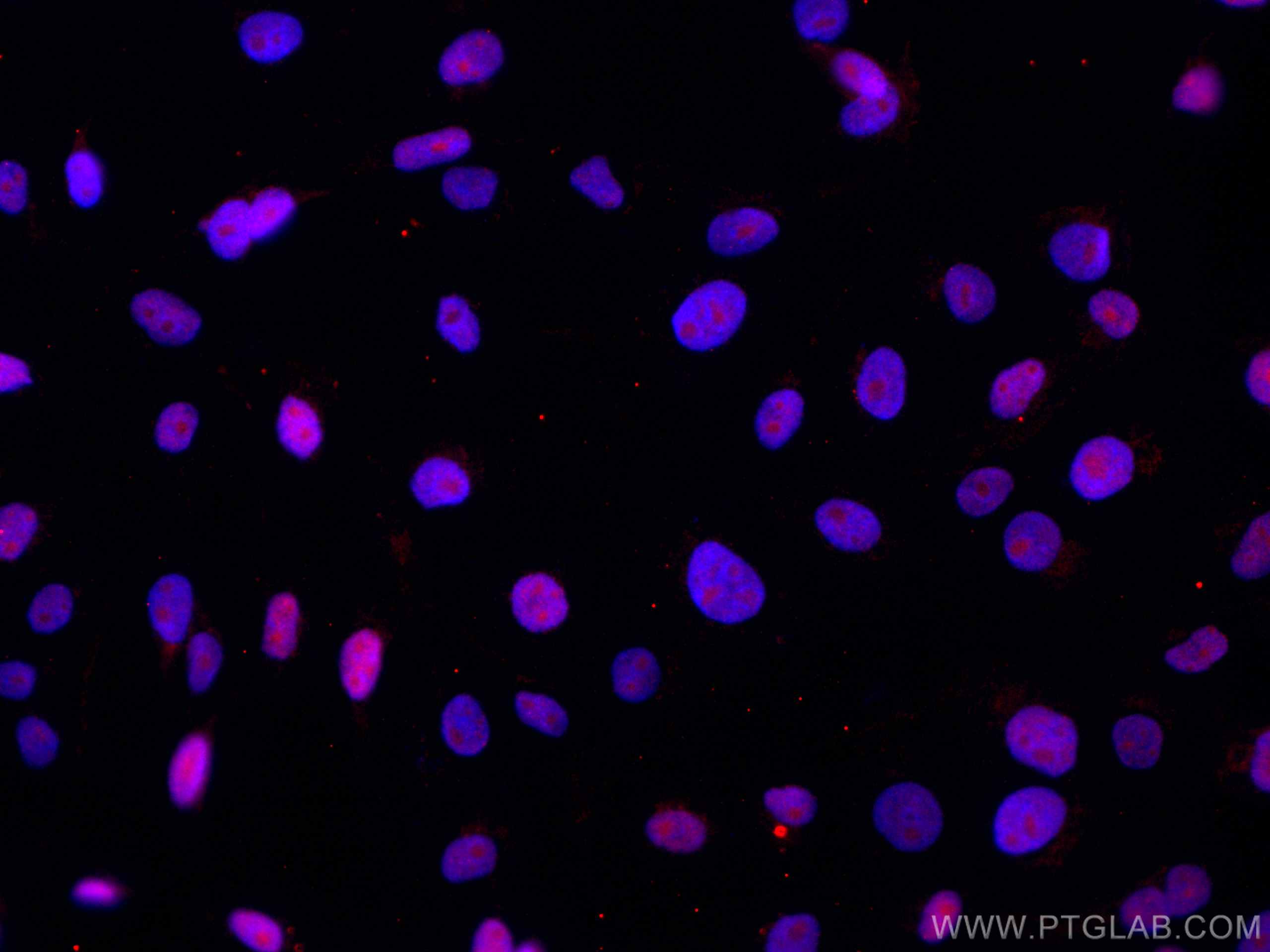Tested Applications
| Positive IF/ICC detected in | A431 cells |
Recommended dilution
| Application | Dilution |
|---|---|
| Immunofluorescence (IF)/ICC | IF/ICC : 1:50-1:500 |
| It is recommended that this reagent should be titrated in each testing system to obtain optimal results. | |
| Sample-dependent, Check data in validation data gallery. | |
Product Information
CL594-66951 targets DBR1 in IF/ICC applications and shows reactivity with Human, Mouse, Rat, Pig samples.
| Tested Reactivity | Human, Mouse, Rat, Pig |
| Host / Isotype | Mouse / IgG2b |
| Class | Monoclonal |
| Type | Antibody |
| Immunogen |
CatNo: Ag8830 Product name: Recombinant human DBR1 protein Source: e coli.-derived, PET28a Tag: 6*His Domain: 204-544 aa of BC009472 Sequence: TLGSPAASELLEHLKPTYWFSAHLHVKFAALMQHQAKDKGQTARATKFLALDKCLPHRDFLQILEIEHDPSAPDYLEYDIEWLTILRATDDLINVTGRLWNMPENNGLHARWDYSATEEGMKEVLEKLNHDLKVPCNFSVTAACYDPSKPQTQMQLIHRINPQTTEFCAQLGIIDINVRLQKSKEEHHVCGEYEEQDDVESNDSGEDQSEYNTDTSALSSINPDEIMLDEEEDEDSIVSAHSGMNTPSVEPSDQASEFSASFSDVRILPGSMIVSSDDTVDSTIDREGKPGGTVESGNGEDLTKVPLKRLSDEHEPEQRKKIKRRNQAIYAAVDDDDDDAA Predict reactive species |
| Full Name | debranching enzyme homolog 1 (S. cerevisiae) |
| Calculated Molecular Weight | 544 aa, 62 kDa |
| Observed Molecular Weight | 70-80 kDa |
| GenBank Accession Number | BC009472 |
| Gene Symbol | DBR1 |
| Gene ID (NCBI) | 51163 |
| RRID | AB_2920062 |
| Conjugate | CoraLite®594 Fluorescent Dye |
| Excitation/Emission Maxima Wavelengths | 588 nm / 604 nm |
| Form | Liquid |
| Purification Method | Protein A purification |
| UNIPROT ID | Q9UK59 |
| Storage Buffer | PBS with 50% glycerol, 0.05% Proclin300, 0.5% BSA, pH 7.3. |
| Storage Conditions | Store at -20°C. Avoid exposure to light. Stable for one year after shipment. Aliquoting is unnecessary for -20oC storage. |
Background Information
DBR1(Lariat debranching enzyme) hydrolyzes 2-prime-to-5-prime branched phosphodiester bonds at the branch point of excised lariat intron RNA and converts them into linear molecules. DBR1 belongs to the lariat debranching enzyme family. Inhibiton of Dbr1 can suppress TDP-43 toxicity in primary neurons, suggesting that Dbr1 could be a potential therapeutic target for ALS and related TDP-43 proteinopathies (PMID: 23104007). This protein has 2 isoforms produced by alternative splicing.
Protocols
| Product Specific Protocols | |
|---|---|
| IF protocol for CL594 DBR1 antibody CL594-66951 | Download protocol |
| Standard Protocols | |
|---|---|
| Click here to view our Standard Protocols |




